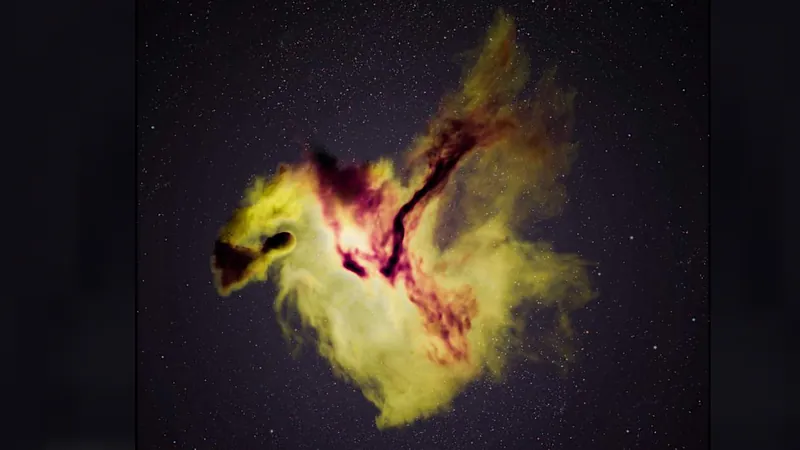
Mystery Revealed: Supernova Unveils Secrets of Silicon and Sulfur Origins
2025-09-02
Author: Jacques
Exploding Stars and Their Surprising Secrets
In a groundbreaking discovery, researchers have unveiled a new type of supernova that challenges everything we thought we knew about the life and death of massive stars. Commonly likened to an onion, these stellar giants possess layers of elements, starting with the lightest on the outside and gradually becoming heavier towards the core. However, a recent study published in *Nature* highlights an extraordinary phenomenon that could rewrite our understanding of stellar evolution.
The Astonishing Find of SN2021yfj
An international research team, featuring experts from Northwestern University and the Weizmann Institute of Science, identified a cosmic explosion named SN2021yfj that was rich in heavy elements like silicon, sulfur, and argon—elements typically found deep within a star. Lead author Dr. Steve Schulze described it as a star 'stripped to the bone,' offering an unparalleled glimpse into the star's inner workings just moments before its explosive demise.
A Stellar Discovery from 2.2 Billion Light-Years Away
Initially spotted in September 2021 using the advanced Zwicky Transient Facility telescope, SN2021yfj is located an astonishing 2.2 billion light-years from Earth. The team aimed to analyze its spectral data to identify the elements present, revealing a spectrum dominated by silicon and sulfur rather than the usual helium and carbon.
Unlocking the Mysteries of Stellar Endings
This unusual revelation suggests that the star unexpectedly shed its outer layers while still in its life cycle. Previous observations of 'stripped stars' typically revealed only lighter materials. The implication is that something intensely violent must have transpired, leading to this star ejecting a significant quantity of its material, providing a window into the elements formed during its last moments.
What Could Have Caused the Explosion?
Scientists are now exploring various theories—including interactions with a companion star, massive pre-explosion eruptions, or even robust stellar winds. The leading theory posits that SN2021yfj resulted from a star essentially tearing itself apart amidst a gravitational squeeze, resulting in extreme heat reigniting nuclear fusion.
A Wish for Deeper Understanding
Dr. Ofer Yaron, a staff scientist, emphasized how this discovery complicates existing theories of how giant stars expunge their outer layers before exploding. Such insights not only deepen our understanding of supernovae but also point to massive stars as vital factories for heavy elemental creation.
Tracing the Origins of Our Universe
As Dr. Gal-Yam from the Weizmann Institute aptly noted, this discovery provides critical information about the production sites of essential elements in the universe. Given that every atom in our bodies originates from cosmic processes, understanding their formation assists us in grasping our place in the universe.
Conclusion: A New Era of Astrochemistry?
The findings from SN2021yfj mark a major advancement in the field of astrochemistry. With the layers of mystery surrounding star formation now less opaque, researchers stand on the precipice of a new understanding of the elements that shape our universe.









 Brasil (PT)
Brasil (PT)
 Canada (EN)
Canada (EN)
 Chile (ES)
Chile (ES)
 Česko (CS)
Česko (CS)
 대한민국 (KO)
대한민국 (KO)
 España (ES)
España (ES)
 France (FR)
France (FR)
 Hong Kong (EN)
Hong Kong (EN)
 Italia (IT)
Italia (IT)
 日本 (JA)
日本 (JA)
 Magyarország (HU)
Magyarország (HU)
 Norge (NO)
Norge (NO)
 Polska (PL)
Polska (PL)
 Schweiz (DE)
Schweiz (DE)
 Singapore (EN)
Singapore (EN)
 Sverige (SV)
Sverige (SV)
 Suomi (FI)
Suomi (FI)
 Türkiye (TR)
Türkiye (TR)
 الإمارات العربية المتحدة (AR)
الإمارات العربية المتحدة (AR)